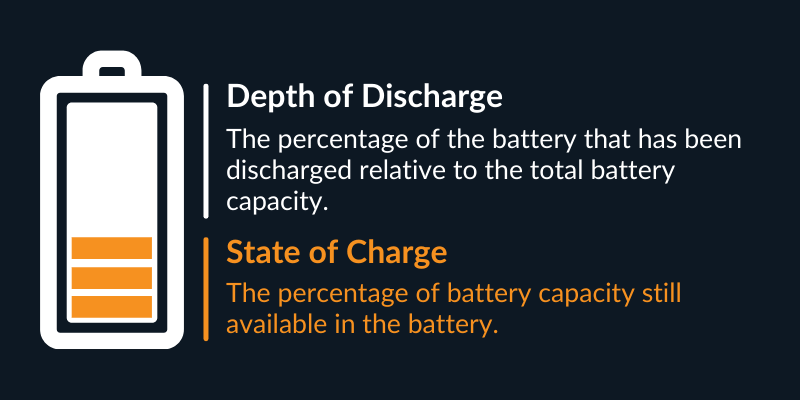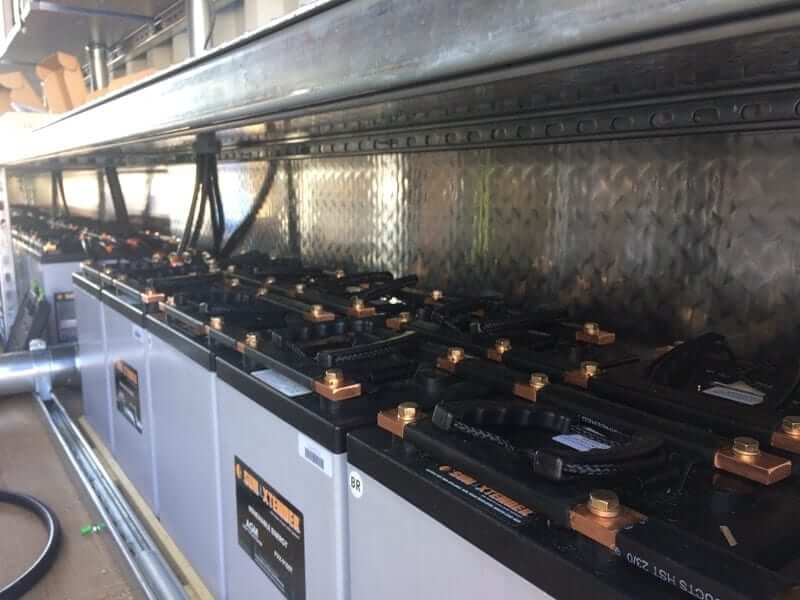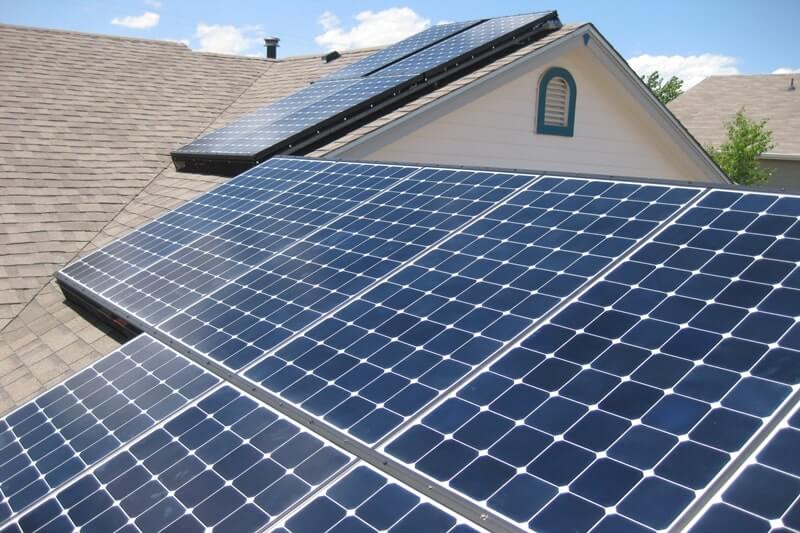Battery Storage 101: What Is Depth of Discharge?

| Supplementing a solar array with a battery storage system is becoming an increasingly widespread practice for many homeowners, and for good reason. Batteries extend the availability of solar power through the night and during surprise power outages. They can also accelerate the solar rate of return depending on your utility’s rate policies (i.e., time-of-use) by storing energy for use when electricity prices are highest.
Because of the growing popularity and improving economics of energy storage, battery manufacturers have responded quickly with a wide range of competitive offerings varying in size, shape, battery capacity, and sophistication. With so many options to choose from, it’s important to focus on several key considerations to ensure you’re getting the best and most valuable battery storage system for your project. In particular, one factor to keep in mind when evaluating any battery is its depth of discharge (DoD), which plays an important role in how much of the battery you can use and how long it will last.
WHAT IS DEPTH OF DISCHARGE?
To define depth of discharge, we must first establish the term battery capacity. Battery capacity is the total electrical energy supply available from the battery, expressed as a unit of power over time, such as kilowatt-hours (kWh).
The depth of discharge is the percentage of the battery that has been discharged relative to the total battery capacity. For example, if you discharge 6 kWh from a solar battery with a capacity of 8 kWh, the battery’s depth of discharge would be 75% (6 kWh / 8 kWh).

WHAT IS THE STATE OF CHARGE?
The state of charge (SoC) is essentially the opposite of depth of discharge. SoC is the percentage of battery capacity still stored and available in the battery. To continue our earlier example, an 8 kWh battery with a Depth of Discharge of 75% has a state of charge of 25%, or 2 kWh remaining.
Similarly, you could call the little battery charge icon on your phone screen a state of charge indicator, but only if you really need to show off your mastery of battery jargon.

WHY IS DEPTH OF DISCHARGE IMPORTANT TO KNOW?
Depth of discharge is significant because it influences battery health and the size of the battery bank needed to meet a home’s energy demands.
Battery manufacturers specify a certain DoD limit for their products. That limit represents the maximum amount of discharge possible without sacrificing future battery performance. The recommended DoD for lead-acid batteries is around 50%, meaning you should not discharge more than half of your available battery capacity to avoid any damage or premature system degradation. Said another way, you would need two lead-acid batteries to supply the same amount of energy as a battery with an equivalent capacity and a DoD of 100% (because you can only effectively use half the capacity of each lead-acid battery).
Most modern lithium-ion batteries have DoDs ranging anywhere from 80% to 95%, with many best-in-class solutions like the rugged Blue Ion 2.0 battery from Blue Planet Energy sporting 100% depth of discharge and a much longer lifespan.
Life tip: The depth of discharge/battery health connection also applies to your phone battery. Making sure to charge your phone before it runs entirely out of juice (a DoD of 100%) will prolong the health of the battery.
Understanding depth of charge is important to size a battery bank properly. Unless the DoD is 100%, the battery capacity will not represent the true amount of energy available. For example, let’s say a homeowner wants to have 20 kWh of energy available from their battery storage system for reserve power. If the batteries they’re using only have a recommended DoD limit of 80%, the battery bank must be designed with a total capacity must of 25 kWh in order to meet the homeowner’s desired energy needs.
DEPTH OF DISCHARGE VS. CYCLE LIFE
One more battery term to know is cycle life, which represents how the estimated charge/discharge cycles a battery can go through before there’s any significant performance drop off. Keep in mind, just like with solar panels, a battery will not simply stop working on the last day of its estimated life span. Many batteries will continue to operate with only marginal declines in performance long after any warranties expire. Part of it depends on how you use the battery too. Some battery owners will discharge their batteries once in a great blue moon, while others—perhaps off-grid homeowners—will need to discharge on a daily basis.
The cycle life of batteries varies greatly by battery chemistry and manufacturer, ranging from the low hundreds to tens of thousands of cycles. The Blue Ion 2.0 battery, for instance, has an incredible 8,000 cycle lifespan, perfect for off-grid living and daily discharges.
The manufacturer determined cycle life is based on a recommended depth of discharge. If a battery exceeds the DoD limit, it will degrade faster than the estimated cycle life. Luckily, the opposite is true as well. If the battery regularly discharges less than the DoD limit, a battery is more likely to continue to perform beyond the estimated cycle life.
EVALUATING BATTERY STORAGE FACTORS
Depth of Discharge is just one of several elements that should be considered when evaluating home solar batteries. Cost is obviously important, as is the battery chemistry (i.e., lead-acid vs. lithium-ion). Also influential is the ability of the battery capacity to match the home’s specific energy storage needs, such as providing reserve power in grid-tied applications or supplying daily power when living off-grid.
Whether you’re well along in your energy storage research or just beginning, our solar + storage experts are here to help with any questions you may have. We’ve been designing robust and reliable battery systems since 1996 and are proud to offer some of the top battery storage solutions available today for residential, commercial, and off-grid projects. Check out some of the batteries we work with and get a free quote on a new energy storage system from IPS.

